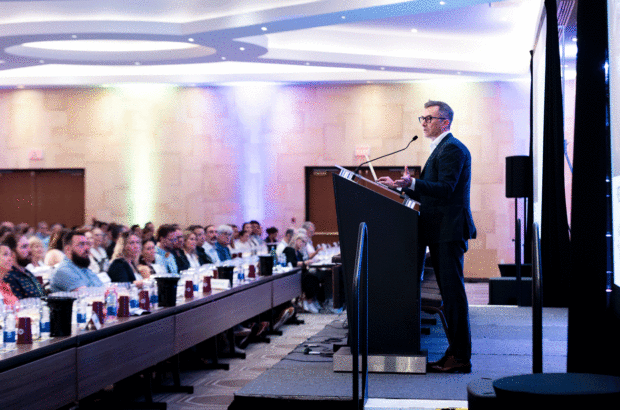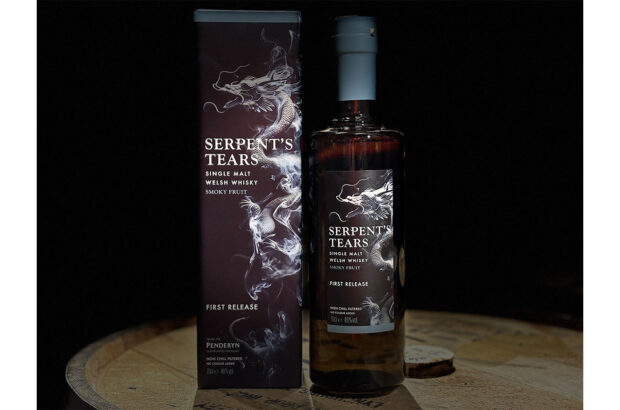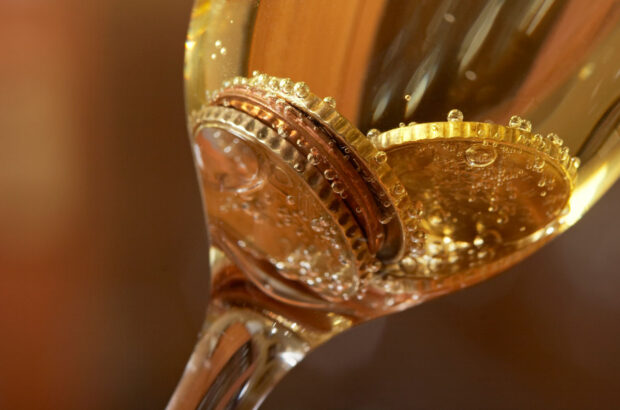Decanter consultant editor Steven Spurrier gives his early verdict on the Bordeaux 2012 vintage, following the en primeur tastings in Bordeaux.
Last year, everyone agreed that 2011 was the most heterogeneous vintage of recent times and 2012 is more so: early-ripening Merlots benefitted the Right Bank ; only massive intervention in the vineyards brought in healthy Cabernet Sauvignons on the Left Bank ; dry whites, picked before the weather broke are uniformly excellent ; while sweet whites were virtually rained off while waiting for botrytis.
Personally, I found the wines more attractive than the 2011s at this early stage – the word ‘cassis’ appears all over my notes to describe the Merlot and Cabernet Sauvignon fruitiness. But there was a slight greenness and hollow middle to many of the Médocs reds and while 2012 is no doubt better than the rainy 2002, the hard 2004s, the edgy 2007s, even probably the underrated 2008s, it is – with few exceptions – not a vintage for the long term.
The principal loser in 2012 was Sauternes, where yields were tiny, quality variable and the economically pressed region was not helped by the corporate-owned châteaux d’Yquem, Rieussec and Suduiraut announcing that they would not be producing any grand vin. In the Médoc, châteaux owners could not afford massive vineyard intervention suffered uneven ripeness.
The winners were the dry whites (especially in Pessac-Léognan but all over the region), the Right Bank with its high Merlot content, Pessac-Leognan, and those Médoc châteaux with money to sacrifice quantity for quality. Colour was good to very good, fruit was upfront, tannins present but balanced, and like 2011, alcohols were around 13% to 13.5%.
Everyone is looking for much lower prices this year – a necessity which will render the 2011s stone dead. But will the proprietors acquiesce? We will wait and see. But even in a challenging vintage like 2012, lovers of Sauvignon-Semillon dry whites and Merlot-Cabernet red blends will still find terrific quality and value from Bordeaux.
Read the full Bordeaux 2012 reports by Steven Spurrier, Jeannie Cho Lee MW & James Lawther MW exclusively in the June edition of Decanter magazine.
Bordeaux 2012: Region by region
Médoc
This appellation starts at St-Seurin-de-Cadourne, north of St-Estèphe and runs to the tip of the Gironde estuary. It is cooler than the Haut-Médoc to the south, but much of the region’s gravelly soils are still to be found here, and there are some dedicated producers well-worth looking out for. View wines
Haut-Médoc
Mostly made up of established cru bourgeois châteaux spread over 15 communes from Blanquefort well south of Margaux to north of St-Estèphe. Soils differ a lot, and previously dominant Cabernet Sauvignon is slowly being replaced by earlier-ripening Merlot to make a more forward style. Without worldwide demand, but with reputations to defend, probably the best value in the Médoc is to be found here. Overall very good fruit in 2012. View wines
St-Estèphe
Without replacing St-Julien as a beacon of reliability, this appellation makes progress year on year. The more clayey soils retain water in dry years to provide a certain freshness that blends well with the general meatiness of the St-Estèphe style. With only five classed growths (though two are 2CCs, same as the much better-endowed Pauillac) the crus bourgeois have a place to shine, which they did in 2012, taking into account a slight rawness in the finish on some. Several characterful wines, overall good for the medium term. View wines
Pauillac
With the highest proportion of Cabernet Sauvignon across its classed growths, Pauillac might have been at a disadvantage in a Merlot year, but the top châteaux rose to the challenge, sacrificing quantity for ripeness. While there was a certain greenness, lack of concentration and precision is some of the lesser wines, vineyard management and winemaking ensured a successful outcome for most, with some very good wines indeed. Fruit and structure here for drinking from the 2020s into the 2030s. View wines
St-Julien
With two exceptions, the very different Léoville-LasCases and Ducru-Beaucaillou both out outstanding quality, St-Julien maintained its status as the most regular of the Médoc communes, as it should with 80% of the appellation made up of classed growths. Sometimes a little roughness was to be found behind the deep colours and fruit, but the edges will round out after a year or two in bottle for an assured 10- to 20-year future. Not a great vintage for the appellation, but no disappointments either, so the reputation is more than maintained. View wines
Listrac and Moulis
Always considered less than Moulis, whose wines are richer, Listrac has redefined itself in recent years and, while still being linear while Moulis is broad, has gained in fruit and depth. The top Moulis are well-established, as are their prices, so there is price to look for in Listrac as well as its lively personality. Both are very reliable for drinking up to the early 2020s, longer for the more robust Moulis. View wines
Margaux
This, with St-Estèphe, provided me with the most improved wines in 2012. The vintage seemed to enhance the charm so often lost in more powerful years, and it was the overextracted wines that fared less well against their more restrained colleagues. The higher proportion of Merlot helped as well, although Ch Margaux still used 87% Cabernet in its grand vin. Because the appellation is spread over several communes, there is much and expected difference in style from south to north, east to west, so the diversity of Margaux, often a disadvantage in the past, offers something for everyone in 2012. Most will be drinking very well after five years. View wines
Pessac-Léognan and Graves
Sandwiched, to a certain extent, between the Merlots of the Right Bank and the Cabernets of the Médoc, the Graves is one of the oldest regions of Bordeaux and the wines maintain a certain elegance as though, being historical, they don’t need to show off. It is one of my very favourite Bordeaux appellations, for the superb (and superb they are in 2012) dry whites, but also for the leafy, textured reds that each show individual vineyard character. A little warmer than the Médoc, many of the Cabernets were ripe before the early October rains. The red and white Graves wines are some of the nicest and best value in Bordeaux, while the Pessac-Léognans have more depth and character, very evident this year. View wines
St-Emilion
Given the climatic complications in 2012 and St-Emilion’s (5,400ha) vast and varied terroir, quality is inevitably varied this year. The surprise, though, is that there are some very good wines to be found. These tend to come from the limestone plateau and better exposed sites that both controlled water uptake and helped ripen the Merlot in advance of the really heavy late October rain (19-21 October). They are medium- to full-bodied, finely textured, expressive and have good length. There’s a sweet but fresh, fruity quality to the Merlot, so even the lighter wines have attractive early-drinking appeal. The less successful tend to be dry and hollow due to the lack of maturity in the fruit. The Cabernet had mixed success. View wines
Pomerol
Pomerol (800ha) undoubtedly looks like being one of if not the major success in 2012. Given the climatic vagaries of the year, the appellation’s warmer, earlier-ripening soils were a key factor, allowing the Merlot to ripen fully and be picked at the end of September/beginning of October before the heavy rain. Colours are good, alcohol levels higher than last year (13.5% to 14.5%), the fruit expressive and the tannins ripe and firm. Certainly the Merlot seems to have performed well, providing power, balance and charm. On the whole, the Cabernet Franc was not deemed quite as successful as in 2011, the percentage in the blends a little less and mainly issuing from older vines. Of course, at this level, selection and investment in the vineyard also played a part. There are plenty of recommendations but finding ‘good value’ may be more difficult. View wines
Lalande de Pomerol
Quality in Lalande de Pomerol (1,150ha) is varied in 2012. A large part of the appellation has sandy-gravel soils which coped less well with the heat and drought in August, resulting in dry and rather rustic tannins in a number of wines. That being said, on the clay and gravel zones where the vineyards were carefully managed there are some notable successes. Here the fruit is riper than in 2011 and the tannins well managed. Winemaking expertise and investment are also important elements in this appellation. The only tip that can be given is to select carefully. View wines
Fronsac and Canon-Fronsac
Fronsac (800ha) and Canon-Fronsac’s (250ha) clay-limestone soils are not necessarily early ripening but they did assist in a difficult vintage, the limestone providing water during the hot, dry spell in August. Rain fell during the harvest period but most of the grapes had been picked by 10 October before the really heavy rain fell. The quality, I would say, is ok to good, the Merlot providing some attractive fruit with styles varying according to the choices made. Some are fruity and ripe, others more classic in structure, while others have a power and concentration that results from yields as low as 20hl/ha. View wines
Côtes de Bordeaux: Cadillac, Castillon and Francs
Despite the inevitable variation found in Castillon (1,840ha) and to a lesser extent Cadillac (1,100ha) and Francs (380ha), 2012 appears to offer a greater potential than 2011. The fruit is more present and there’s a sweetness that helps soften the acidity in the wines making them less strident than in 2011. The tannins, too, feel a little more fleshed out which also calms what can sometimes be a robust nature in these wines. This is not 2009 or 2010, but there are some attractive pickings in these appellations. View wines
Sauternes and Barsac
The 2012 vintage ranks among the most challenging of the past 30 years – a vintage when some of the greatest Sauternes houses didn’t make any wine. The bright side is that it was not a disaster for the entire region: the lesser-known Sauternes properties had a chance to shine and successful Barsac châteaux produced wines with purity of fruit, fresh acidity and delicate flavours. This is not a concentrated vintage for long-term cellaring but what the successful wines do offer is balance, elegance and freshness.View wines
Bordeaux 2012: Ratings and tasting notes
- First Growths
- Pauillac
- Margaux
- Saint-Estèphe
- Saint-Julien
- Haut-Médoc
- Médoc
- Listrac-Médoc & Moulis-en-Médoc
- Graves & Pessac-Léognan (reds)
- Saint-Emilion Grands Crus Classés
- Saint-Emilion Grands Crus
- Pomerol
- Lalande-de-Pomerol
- Fronsac & Canon-Fronsac
- Castillon- & Francs-Côtes de Bordeaux
- Graves, Pessac-Leognan & other dry whites
- Sauternes & Barsac







